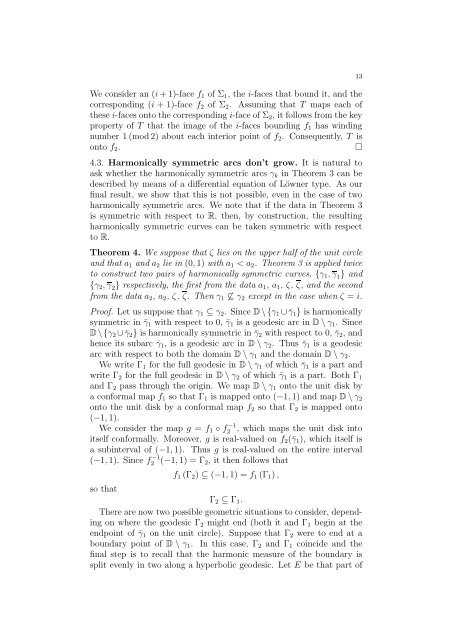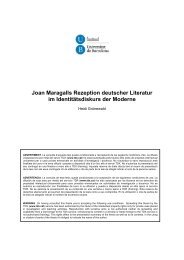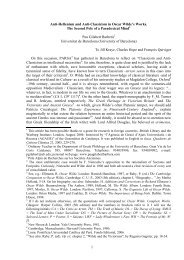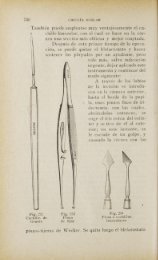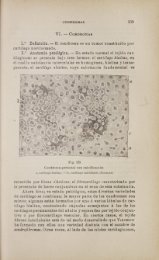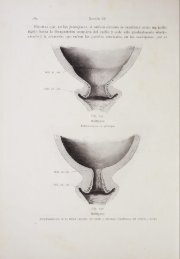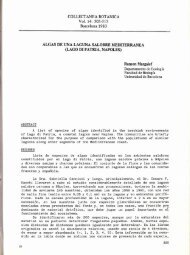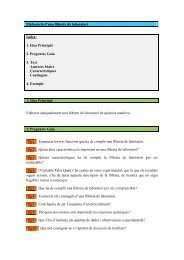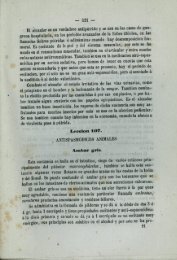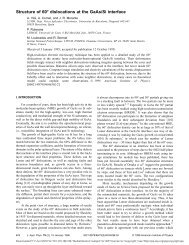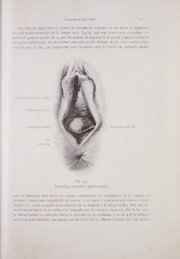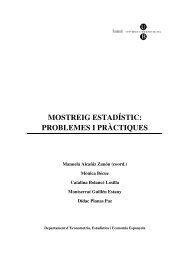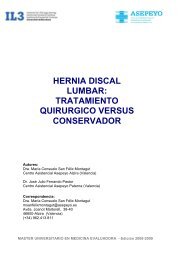The univalent Bloch-Landau constant, harmonic symmetry and ...
The univalent Bloch-Landau constant, harmonic symmetry and ...
The univalent Bloch-Landau constant, harmonic symmetry and ...
You also want an ePaper? Increase the reach of your titles
YUMPU automatically turns print PDFs into web optimized ePapers that Google loves.
We consider an (i+1)-face f 1 of Σ 1 , the i-faces that bound it, <strong>and</strong> the<br />
corresponding (i + 1)-face f 2 of Σ 2 . Assuming that T maps each of<br />
these i-faces onto the corresponding i-face of Σ 2 , it follows fromthe key<br />
property of T that the image of the i-faces bounding f 1 has winding<br />
number 1(mod2) about each interior point of f 2 . Consequently, T is<br />
onto f 2 .<br />
□<br />
4.3. Harmonically symmetric arcs don’t grow. It is natural to<br />
ask whether the <strong>harmonic</strong>ally symmetric arcs γ k in <strong>The</strong>orem 3 can be<br />
described by means of a differential equation of Löwner type. As our<br />
final result, we show that this is not possible, even in the case of two<br />
<strong>harmonic</strong>ally symmetric arcs. We note that if the data in <strong>The</strong>orem 3<br />
is symmetric with respect to R, then, by construction, the resulting<br />
<strong>harmonic</strong>ally symmetric curves can be taken symmetric with respect<br />
to R.<br />
<strong>The</strong>orem 4. We suppose that ζ lies on the upper half of the unit circle<br />
<strong>and</strong> that a 1 <strong>and</strong> a 2 lie in (0,1) with a 1 < a 2 . <strong>The</strong>orem 3 is applied twice<br />
to construct two pairs of <strong>harmonic</strong>ally symmetric curves, {γ 1 ,γ 1 } <strong>and</strong><br />
{γ 2 ,γ 2 } respectively, the first from the data a 1 , a 1 , ζ, ζ, <strong>and</strong> the second<br />
from the data a 2 , a 2 , ζ, ζ. <strong>The</strong>n γ 1 ⊈ γ 2 except in the case when ζ = i.<br />
Proof. Let us suppose that γ 1 ⊆ γ 2 . Since D\{γ 1 ∪¯γ 1 } is <strong>harmonic</strong>ally<br />
symmetric in ¯γ 1 with respect to 0, ¯γ 1 is a geodesic arc in D\γ 1 . Since<br />
D\{γ 2 ∪¯γ 2 } is <strong>harmonic</strong>ally symmetric in ¯γ 2 with respect to 0, ¯γ 2 , <strong>and</strong><br />
hence its subarc ¯γ 1 , is a geodesic arc in D \γ 2 . Thus ¯γ 1 is a geodesic<br />
arc with respect to both the domain D\γ 1 <strong>and</strong> the domain D\γ 2 .<br />
We write Γ 1 for the full geodesic in D\γ 1 of which ¯γ 1 is a part <strong>and</strong><br />
write Γ 2 for the full geodesic in D\γ 2 of which ˜γ 1 is a part. Both Γ 1<br />
<strong>and</strong> Γ 2 pass through the origin. We map D\γ 1 onto the unit disk by<br />
a conformal map f 1 so that Γ 1 is mapped onto (−1,1) <strong>and</strong> map D\γ 2<br />
onto the unit disk by a conformal map f 2 so that Γ 2 is mapped onto<br />
(−1,1).<br />
We consider the map g = f 1 ◦ f2 −1 , which maps the unit disk into<br />
itself conformally. Moreover, g is real-valued on f 2 (¯γ 1 ), which itself is<br />
a subinterval of (−1,1). Thus g is real-valued on the entire interval<br />
(−1,1). Since f2 −1 (−1,1) = Γ 2 , it then follows that<br />
f 1 (Γ 2 ) ⊆ (−1,1) = f 1 (Γ 1 ),<br />
so that<br />
Γ 2 ⊆ Γ 1 .<br />
<strong>The</strong>re arenow two possible geometric situations to consider, depending<br />
on where the geodesic Γ 2 might end (both it <strong>and</strong> Γ 1 begin at the<br />
endpoint of ¯γ 1 on the unit circle). Suppose that Γ 2 were to end at a<br />
boundary point of D \ γ 1 . In this case, Γ 2 <strong>and</strong> Γ 1 coincide <strong>and</strong> the<br />
final step is to recall that the <strong>harmonic</strong> measure of the boundary is<br />
split evenly in two along a hyperbolic geodesic. Let E be that part of<br />
13


